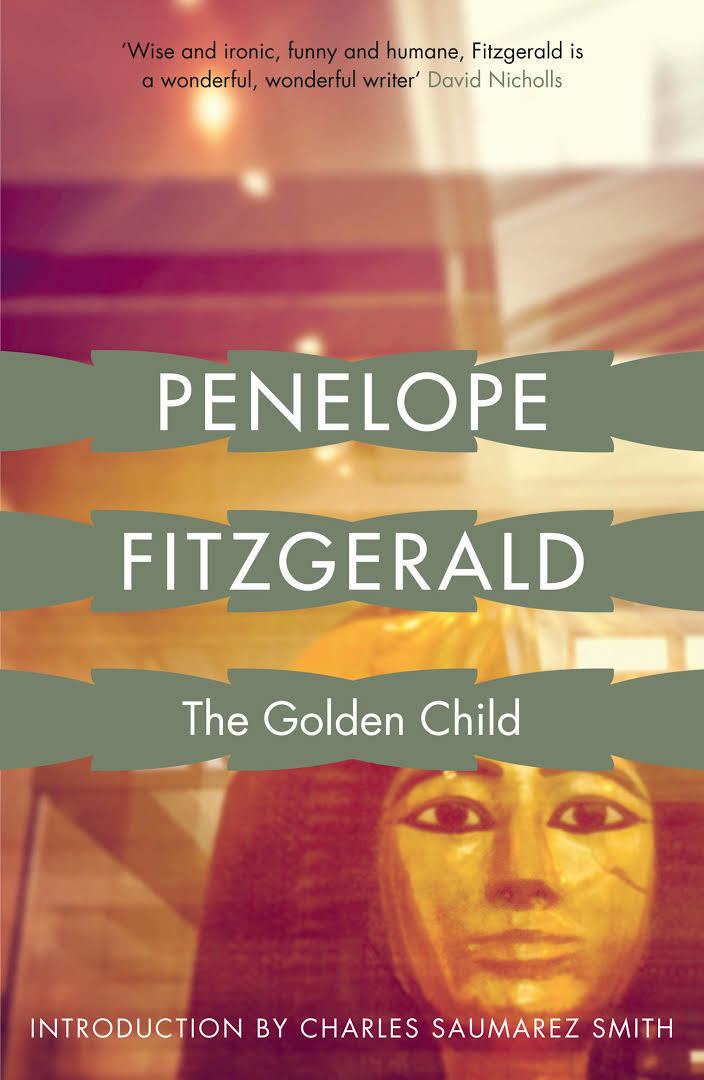7 /10 1 Votes7
Originally published 1977 | 3.5/5 Goodreads Media type Print (Hardback) | |||||||||||||||||||||||||||||||||
 | ||||||||||||||||||||||||||||||||||
Similar Offshore, The Blue Flower, The Gate of Angels, The Beginning of Spring, The Bookshop | ||||||||||||||||||||||||||||||||||
The Golden Child is a novel by British author Penelope Fitzgerald. It offers a satirical version of the King Tut exhibition at the British Museum in 1972, and also pokes fun at museum politics, academic scholars, and Cold War spying.
Contents
Background
Fitzgerald wrote the novel to amuse her husband, who was terminally ill. She was inspired by her two visits to the King Tut exhibit, and the incredibly poor museum-goer experience she underwent. The original manuscript was much longer, with chapters on the extended cover-up the Museum, with Government connivance, engages in. They were cut by the publisher.
The publisher also wanted Fitzgerald to write more Professor Untermensch novels. She originally started the drafts of two such novels, but in the end thought it best not to be typecast.
Character summary
Plot summary
In January 1973, London, the Museum is exhibiting, for the first time anywhere, the golden Garamantian treasures, including the Golden Child. Crowds, especially of schoolchildren, queue for hours for a brief sight under poor lighting. Sir William takes no interest in the exhibit.
Running an errand for Sir William late at night — the return of a clay tablet — Smith is strangled, but left alive, by someone using string from the Ball of Golden Twine. When suspicion surfaces concerning the authenticity of some of the exhibits, the Museum dispatches Smith, with the Golden Doll, to Moscow to get Semyonov's opinion. It is expected no one will be suspicious of Smith because of his low position. Untermensch realizes the exact opposite will be true with the Soviets, that they will assume he is of course a spy, so he tags along and shadows Smith. After two days of failing to make contact with Semyonov, Smith learns the truth: there is no Semyonov. The Soviets, thinking to impress upon the British they know what game the British are playing, allow Smith and Untermensch (assumed by the Soviets, as Untermensch intended, to be an internal spy on Smith) to view the real Garamantian treasure.
Smith, demoralized, returns. He is detained briefly and without much explanation by someone from the Ministry of Defence and someone from Special Branch. He invokes Sir William, whom he expects will clarify his trip, only to learn Sir William is dead. His body was found between two shelves in a compact storage unit. During their questioning of staff, Jones turns up dead, fallen from five stories up.
Coker, Smith and Untermensch solve the crime by realizing the clay tablet was also a fake, and decoding the message from Sir William using Garamantian hieroglyphics to give a rebus that reveals he had changed his will in Sir John's disfavour. Confronted and trapped, Sir John commits a bit of mayhem with the exhibit, then suicide. The three hide Sir John's body in a coffin, and quickly prepare a hasty repair job with some new fakes replacing the damaged fakes, in time for the night showing.
Reception
A muddle of violence and intrigue that I wouldn't have missed for the world.
Critical review
The novel has a chapter of its own in Peter Wolfe Understanding Penelope Fitzgerald and Hermione Lee Penelope Fitzgerald: A Life
